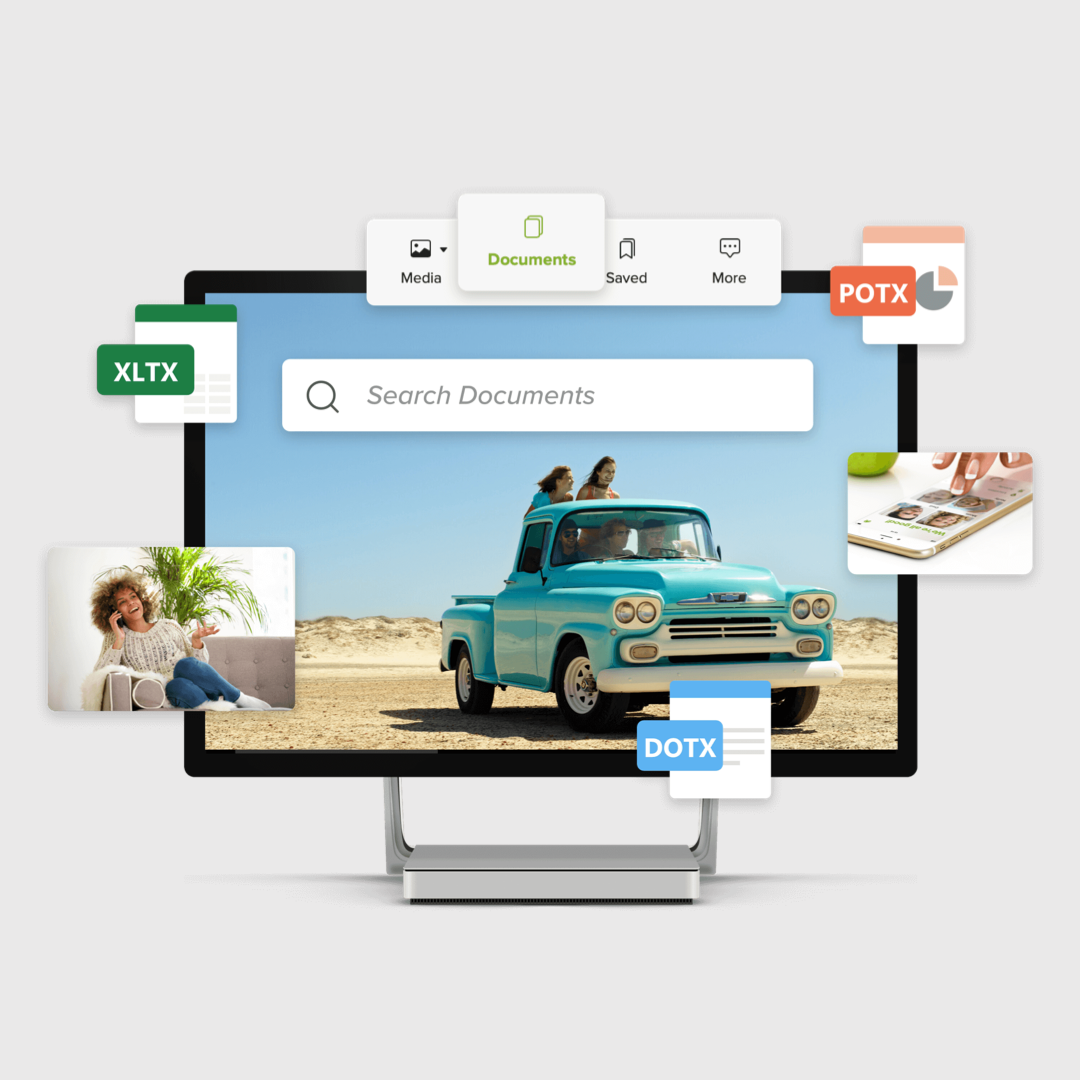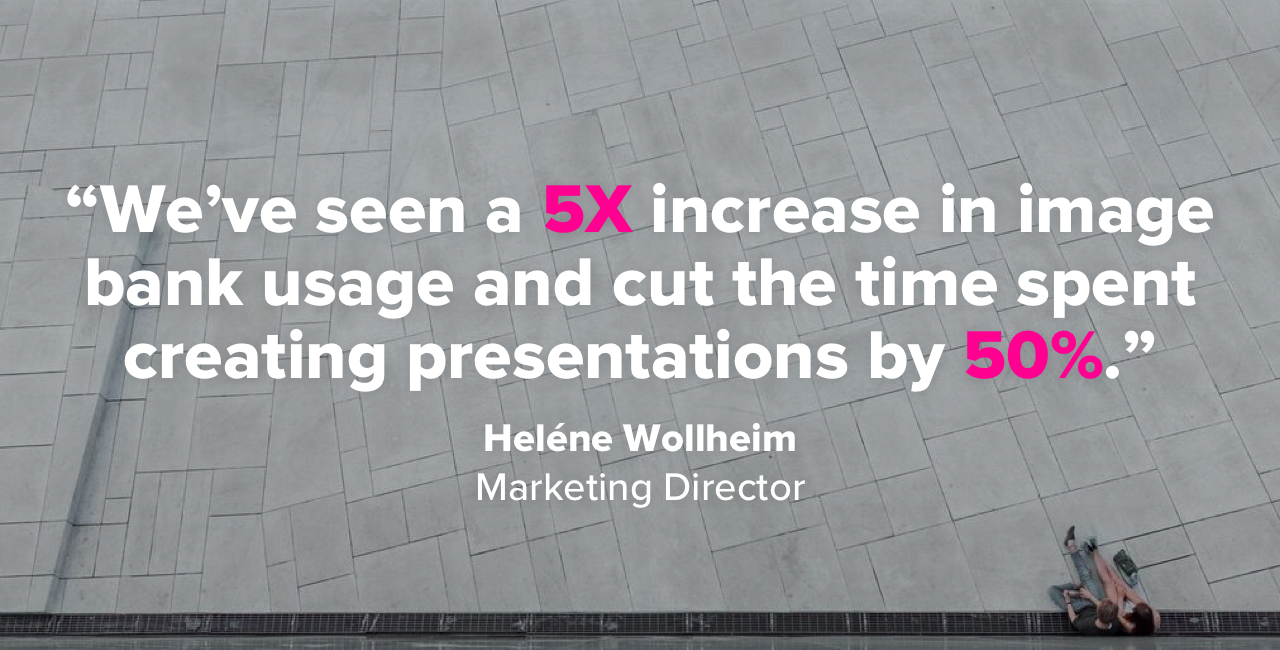How to create a DAM business case: 2024 comprehensive guide
Why create a DAM business case?
In today's digital age, managing digital assets has become increasingly important for businesses across various industries. The sheer volume of digital assets, including images, videos, documents, and other media, can quickly become overwhelming without a systematic approach in place. To effectively manage these assets and streamline workflows, companies often turn to Digital Asset Management (DAM) solutions.
In this comprehensive guide, we will explore the intricacies of creating a business case for implementing a DAM system, highlighting must-have's steps, and providing strategies for risk assessment and mitigation.
Let's delve deeper into all the details a DAM business case needs to cover.
Identifying the need for a digital asset management system
Before creating a business case for DAM, it is crucial to identify the pain points and inefficiencies in your current asset management processes. Are employees spending excessive time searching for assets? Do multiple versions of the same asset exist? By conducting a thorough assessment, you can pinpoint the areas that can be improved through the implementation of a DAM system.
One common pain point in asset management is the lack of a centralized repository for digital assets. Without a DAM system in place, assets are often scattered across various folders, servers, and even personal computers. This decentralized approach makes it challenging for employees to locate the assets they need efficiently. They may spend valuable time searching multiple locations, decreasing productivity.
Furthermore, the absence of a DAM system can lead to the proliferation of multiple versions of the same asset. This can occur when employees save copies of assets on their local drives or make modifications without proper version control. As a result, it becomes difficult to determine which version is the most up-to-date, leading to confusion and potential errors in marketing collateral or other materials.

Highlighting the benefits of digital asset management
When presenting the business case for DAM, it is essential to highlight the tangible benefits it brings to the organization. These benefits may include increased productivity, reduced costs associated with lost or misplaced assets, improved brand consistency, accelerated time-to-market, and enhanced collaboration among team members and external stakeholders.
Key components of a digital asset management business case
1. Defining the problem statement
Start by clearly defining the problem that your organization is facing in terms of asset management. Whether it's disorganized files, inefficiencies in locating assets, or issues with brand consistency, articulate the problem statement concisely to set the stage for proposing a solution.
Real-life example
Currently, our organization lacks a centralized system for managing, storing, and distributing digital assets such as images, videos, presentations, and documents. This lack of a centralized system results in:
- Inefficiencies: Employees spend an excessive amount of time searching for assets, leading to reduced productivity.
- Inconsistency: Multiple versions of assets exist in disparate locations, leading to brand inconsistency when outdated or off-brand assets are used.
- Limited accessibility: Digital assets are not easily accessible across all departments or remote workers, hindering the seamless execution of marketing and communication activities.
- Poor asset utilization: We have limited insight into the usage of our assets, leading to a sub-optimal return on investment on our asset creation efforts.
The goal of implementing a DAM system is to streamline our processes, improve productivity, strengthen brand consistency, and enhance the visibility of our assets' usage, leading to better strategic decisions.
👉 Check how PayEX saw a 5X increase in the usage of the brand assets after switching to Pickit 👈

2. Proposing the solution
After identifying the problems, propose a DAM solution that addresses these issues. Outline the features and functionalities of the chosen DAM system and explain how it will integrate into your existing workflows. Additionally, highlight the scalability and flexibility of the system to accommodate future growth and technological advancements.
3. Outlining the implementation plan
An implementation plan is crucial to the success of any project, including the adoption of a DAM system. Break down the implementation process into manageable phases, specifying timelines, assigned responsibilities, and key milestones. Consider conducting pilot tests to ensure a smooth transition and gain valuable feedback from users before wider implementation.
Here is an example of what an implementation plan for the Pickit DAM system could look like:
Real-life example
- Phase 1 – Setup: Configure Pickit DAM to fit our needs, and migrate existing assets to the system.
- Phase 2 – Training: Provide training to all employees on how to use Pickit DAM.
- Phase 3 – Deployment: Roll out Pickit DAM across the organization and monitor usage.
- Phase 4 – Evaluation: Regularly review and evaluate the system's effectiveness and make adjustments as necessary.
Cost-benefit analysis of Digital Asset Management
Estimating the costs
When presenting a DAM business case, it is essential to address the cost aspect. Include both upfront costs, such as software purchase or licensing fees, as well as ongoing expenses, such as maintenance and support. Additionally, factor in the resources required for implementation, training, and regular updates to ensure a comprehensive cost estimate.
👉 Check this article to learn how to save more than 30,000$ with a digital asset management system 👈

Evaluating the potential benefits
Conduct a thorough analysis of the potential benefits a DAM system can bring to your organization. Quantify the improvements in productivity, time savings, and reduction in associated costs. Additionally, consider intangible benefits, like improved brand reputation and increased customer satisfaction. Provide data-driven evidence, case studies, and industry benchmarks to support your claims.
Risk assessment and mitigation strategies
Identifying and mitigating potential risks
Implementing a DAM system also involves inherent risks that need to be identified and addressed. These risks may include data security vulnerabilities, resistance to change from employees, integration challenges with existing systems, or potential disruptions during the implementation process. Identifying risks early on allows you to develop effective mitigation strategies.
Here is an example of what a risk assessment and mitigation plan for the Pickit DAM system could look like:
Real-life example
- Data migration risk: The process of migrating existing assets to the new system could result in data loss or corruption. To mitigate this risk, we will implement a comprehensive data backup and verification process before, during, and after migration.
- Adoption risk: There is a risk that employees may resist the change to a new system. To address this, we will conduct comprehensive training sessions and provide continuous support to ensure all employees understand how to use the new system and see its benefits.
- Integration risk: The new DAM system may not integrate seamlessly with existing software and systems, potentially causing disruption in current workflows. To mitigate this, we will conduct thorough testing during implementation and work closely with the Pickit team to resolve any integration issues.
- Cost overrun risk: There could be unanticipated costs that arise during the implementation or ongoing maintenance of the DAM system. To prevent this, we will closely monitor expenses during all stages of implementation and maintenance, and maintain a contingency fund.
- Vendor dependability risk: There's a risk that the DAM solution provider may not provide adequate support or may cease operation. We'll mitigate this risk by conducting thorough research and reviews on the reliability of the vendor before making the decision to implement their solution.
Summary
Implementing a Digital Asset Management system can provide numerous benefits to businesses of all sizes. From improved productivity to streamlined workflows and enhanced collaboration, a well-executed DAM solution can transform the way organizations manage and leverage their digital assets.
By following the comprehensive guide outlined above, you can prepare a robust DAM business case, justify the investment, and pave the way for successful implementation and adoption of a DAM system.